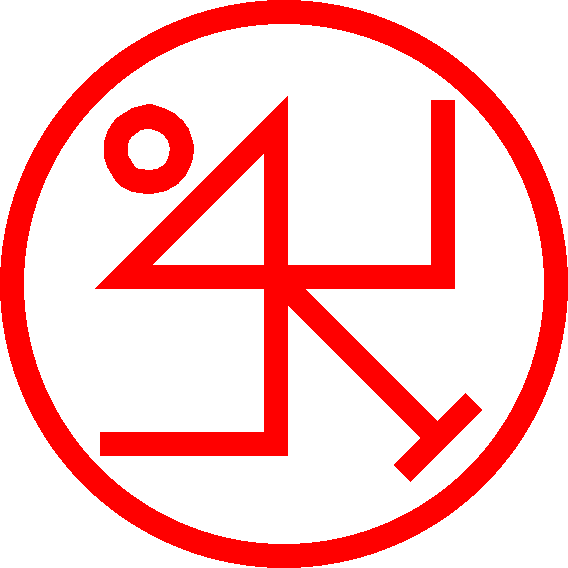[« Adjectives] [Contents] [Other Pronouns »]
Notes
Middle Egyptian had the following types of personal pronouns:
- Suffix
- Dependent
- Independent
- Subject (not developed until Dynasty 17)
Egyptian also has demonstrative and interrogative pronouns, discussed on the Other Pronouns page.
Note about Dual forms
Of all the types of pronouns in Middle Egyptian, the only ones with well-attested dual forms seem to be the suffix pronouns, and that only in formal texts, especially religious ones. For all other uses or types of pronouns, the plural form covers the dual as well.
Suffix Pronouns
Suffix pronouns are attached to other words and cannot stand alone. Their uses include:
- Subject of a verbal sentence
- Possessive adjective for a noun
- Object of a preposition
- The subject in an adverbial sentence introduced by 𓇋𓅱 jw or similar particles
Dependent Pronouns
Dependent pronouns are separate words, but “depend” on some other word in the sentence and cannot stand at the beginning; instead, they attach to the word before them (and its suffix pronoun if it has one). Their uses, and the words they depend on in each, include:
- Direct object of a verb, which may be reflexive; depends from the verb
- Subject of an adverbial sentence; depends from a suitable sentence particle
- Subject of an adjectival sentence; depends from the adjective (in second and third person only)
Independent Pronouns
Independent pronouns do not depend on other words in a sentence and can function as a predicate unto themselves. Their uses include:
- Subject in a sentence with a nominal predicate
- Subject in a sentence with an adjectival predicate (first person only, and uses nominal predicate syntax)
- Subject of an infinitive, when expressed as an agent
Subject Pronouns
These pronouns begin to appear in Dynasty 17, so while they are used in texts thereafter, they will not be found in texts of the Middle Kingdom. They are used as the subject in certain kinds of sentences, including ones with adverbial predicates. They stand at the beginning of the sentence and cannot follow particles.
Table of Suffix Pronouns
| Person | Singular | Plural | Dual | |||
|---|---|---|---|---|---|---|
| 1st | 𓀀, 𓇋 1 | .j | 𓈖𓏥 | .n | 𓈖𓏭 | .nj |
| 2nd masc. | 𓎡 | .k | 𓏏𓈖𓏥, 𓍿𓈖𓏥 | .tn, .ṯn | 𓏏𓈖𓏭, 𓍿𓈖𓏭 | .tnj, .ṯnj |
| 2nd fem. | 𓏏, 𓍿 | .ṯ, .t | ||||
| 3rd masc. | 𓆑 | .f | 𓋴𓈖𓏥 or 𓊃𓈖𓏥 | .sn | 𓋴𓈖𓏭 or 𓊃𓈖𓏭 | .snj |
| 3rd fem. | 𓋴, 𓊃 | .s | ||||
Table of Dependent Pronouns
| Person | Singular | Plural | ||
|---|---|---|---|---|
| 1st | 𓅱𓀀, 𓏲𓀀 | wj | 𓈖𓏥 | n |
| 2nd masc. | 𓍿𓅱, 𓏏𓅱 | ṯw | 𓏏𓈖𓏥, 𓍿𓈖𓏥 | tn, ṯn |
| 2nd fem. | 𓍿𓈖, 𓏏𓈖 | ṯn, tn | ||
| 3rd masc. | 𓇓𓅱, 𓇓𓏲 | sw | 𓋴𓈖𓏥 or 𓊃𓈖𓏥 | sn |
| 3rd fem. | 𓋴𓏭, 𓊃𓏭 | sj | ||
| 3rd comm.1 | 𓋴𓏏, 𓊃𓏏 st | |||
Table of Independent Pronouns
| Person | Singular | Plural | ||
|---|---|---|---|---|
| 1st | 𓏌𓎡𓀀 | jnk | 𓇋𓀁𓈖𓈖𓏥 | jnn |
| 2nd masc. | 𓈖𓏏𓎡 | ntk | 𓈖𓏏𓏏𓈖𓏥, 𓈖𓏏𓍿𓈖𓏥 | ntṯn, nttn |
| 2nd fem. | 𓈖𓏏𓍿 or 𓈖𓏏𓏏 | ntṯ or ntt | ||
| 3rd masc. | 𓈖𓏏𓆑 | ntf | 𓈖𓏏𓋴𓈖𓏥, 𓈖𓏏𓊃𓈖𓏥 | ntsn |
| 3rd fem. | 𓈖𓏏𓋴, 𓈖𓏏𓊃 | nts | ||
Table of Subject Pronouns1
| Person | Singular | Plural | ||
|---|---|---|---|---|
| 1st | 𓏏𓅱𓀀 | tw.j | 𓏏𓅱𓈖𓏥 | tw.n |
| 2nd masc. | 𓏏𓏲𓎡 | tw.k | 𓏏𓅱𓏏𓈖𓏥 | tw.tn |
| 2nd fem. | 𓏏𓅱𓁐 | tw(.t) | ||
| 3rd masc. | 𓇓𓏲, 𓇓𓅱 | sw | 𓋴𓏏, 𓋴𓏏𓏥 | st |
| 3rd fem. | 𓋴𓏭 | sj | ||
[« Adjectives] [Contents] [Other Pronouns »]
